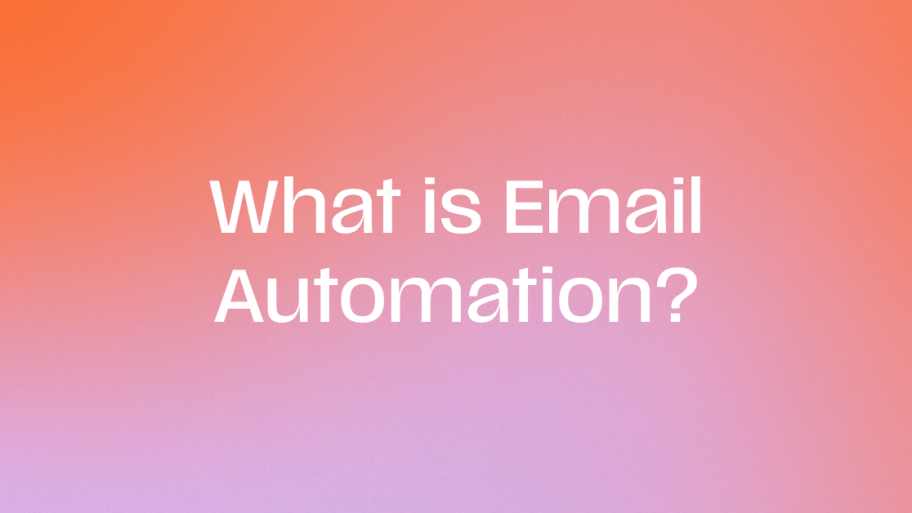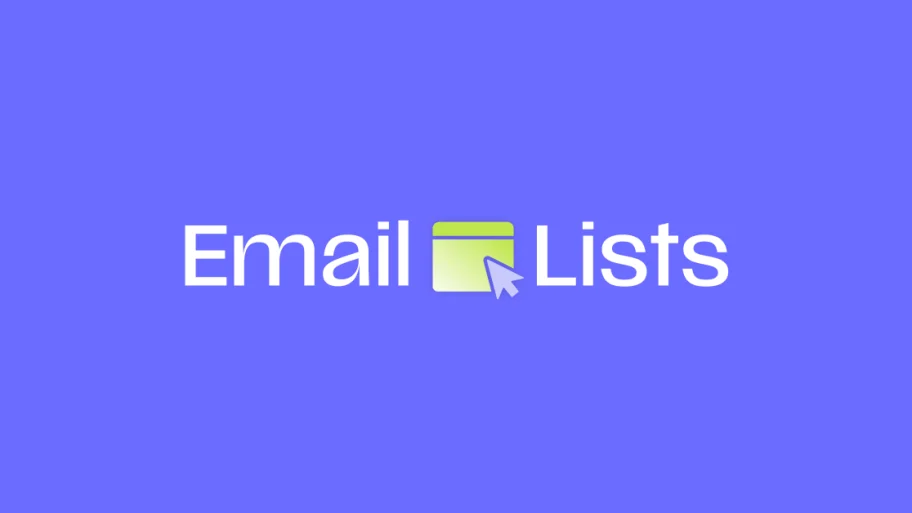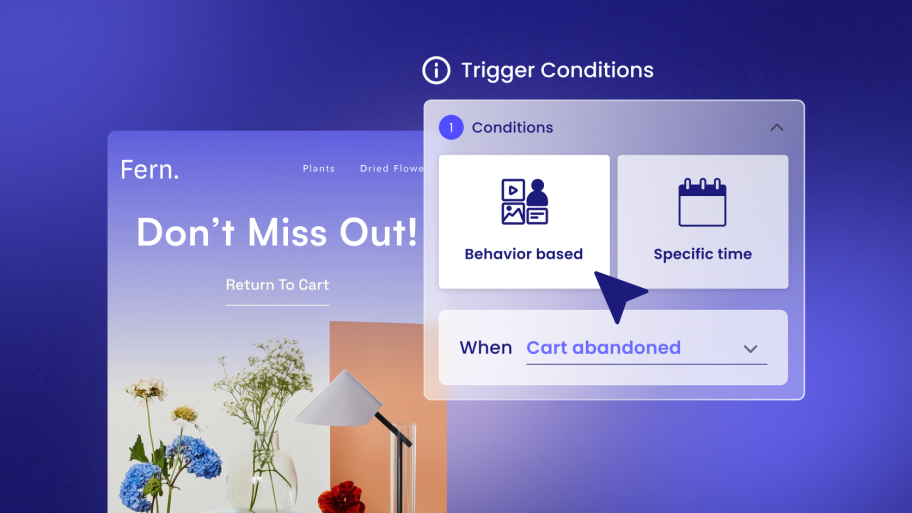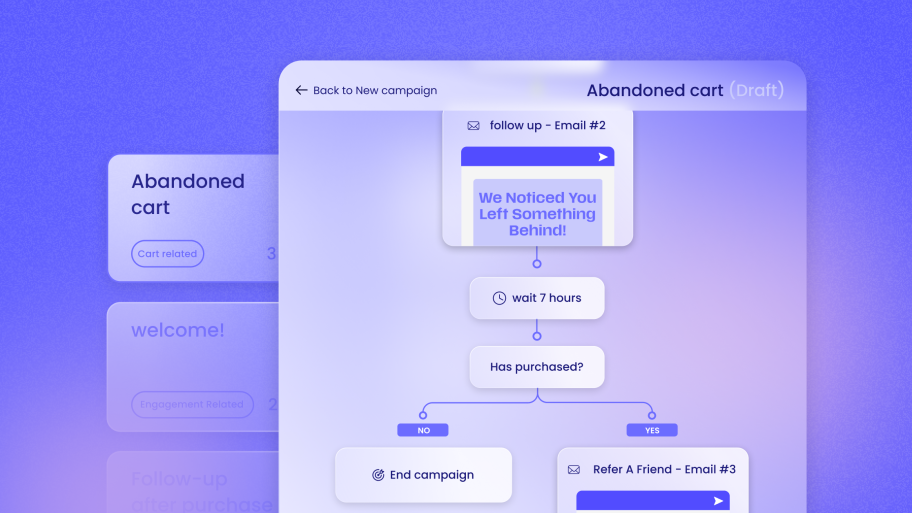Forget any notion that email is outdated. For e-commerce, it remains the undisputed king of digital marketing. It’s not just about sending a monthly newsletter; it’s about architecting a sophisticated, automated revenue engine that works around the clock. It’s about building relationships, nurturing leads, and turning one-time buyers into lifelong fans.
This guide is your complete blueprint. We’ll walk through every step required to build and manage a high-performing email marketing strategy for your e-commerce clients. For web creators, mastering this skill is a golden opportunity. It’s your chance to move beyond the one-off project and offer a high-value, recurring service that drives predictable growth. By leveraging the right strategies and tools—especially those that integrate seamlessly into the WordPress and WooCommerce environment you already command—you can transform a simple website into a powerful, relationship-building sales machine.
Why Email Marketing Remains the Undisputed Champion for Ecommerce
In a landscape crowded with fleeting trends, email marketing stands firm as a pillar of sustainable growth. It consistently delivers results that other channels struggle to match. Before we dive into the “how,” let’s solidify the “why.” Understanding its power is the first step in selling this essential service to your clients and proving your ongoing value.
The Astonishing ROI and a Direct Line to Revenue
Let’s start with the bottom line. The return on investment for email marketing is staggering. While figures vary by industry, it’s common to see an average return of $36-$42 for every $1 spent. No other digital marketing channel comes close to that level of efficiency. Why? Because you are communicating with a warm audience of people who have explicitly given you permission to contact them.
This leads to the core concept of an “owned” audience. When your client builds an email list, they are building a business asset. They own that list. It doesn’t matter if a social media platform’s algorithm changes or if ad prices fluctuate; that direct line of communication to their customers is theirs to keep. You aren’t “renting” space on someone else’s platform; you are inviting customers into your own branded space. This stability is invaluable in an unpredictable digital world.
From your perspective as a creator, this provides a direct link between your efforts and your client’s revenue. With the right tools, you can track exactly how many sales each email generates, making it simple to demonstrate clear, undeniable ROI.
The Power of Personalization at Scale
Modern consumers expect personalization. They want to feel seen and understood, not just marketed to. Email is uniquely positioned to deliver this experience at scale. You can move far beyond a generic “Hi [First Name]” and create deeply personalized customer journeys.
Imagine sending a welcome series that adapts based on how a new subscriber found you. Or sending product recommendations based on a customer’s past purchases and browsing history. Or even tailoring promotional offers to a customer’s “VIP” status. This level of personalization makes customers feel valued and understood, which is the foundation of a strong, long-term relationship. It transforms your client’s email from a simple broadcast tool into a smart, conversational platform.
Building a Brand, Not Just a Business
While driving sales is the primary goal, email marketing is also one of the best channels for brand building. It’s a space to tell a story, share your client’s mission, and build a genuine community around their products.
You can use email to:
- Go behind the scenes and show how products are made.
- Highlight user-generated content and build social proof.
- Share valuable tips and tutorials related to the products.
- Communicate the brand’s values and social initiatives.
This type of content fosters a connection that transcends transactions. It increases customer lifetime value (CLV) by giving people compelling reasons to stick around long after their initial purchase, turning them from simple customers into loyal brand advocates.
Building Your Foundation: The Art of the High-Quality Email List
An email marketing strategy is only as good as the list it’s built on. The foundational step for any e-commerce business is to create a healthy, engaged, and steadily growing list of subscribers who want to hear from you. The focus must always be on quality over quantity.
Quality First: Why Purchased Lists Are a Dead End
Let’s get this out of the way immediately: never, ever buy an email list. It may seem like a tempting shortcut, but it’s a guaranteed path to failure. People on purchased lists never gave your client permission to email them. Sending unsolicited emails will lead to a cascade of negative consequences:
- Extremely Low Engagement: Open and click-through rates will be abysmal.
- High Spam Complaints: Users will mark your emails as spam, which severely damages your client’s sender reputation.
- Poor Deliverability: A damaged sender reputation means that even your legitimate emails will start landing in the spam folder for your real, engaged subscribers.
- Potential Legal Trouble: Sending unsolicited commercial emails can violate regulations like the CAN-SPAM Act in the U.S. and GDPR in Europe.
Building a list organically takes time, but it’s the only way to create an engaged audience that will actually drive revenue.
Proven Strategies for Attracting Eager Subscribers
The key to organic list growth is a clear value exchange. You must give users a compelling reason to hand over their email addresses.
- Compelling Pop-up Forms: When implemented correctly, pop-ups are the single most effective tool for list building. The secret is in the timing and the offer. Don’t show the pop-up the second a user lands on the site. Instead, trigger it based on time on page (e.g., 15 seconds), scroll depth (e.g., 50% down the page), or exit-intent (when the user is about to leave). The offer must be irresistible. “Join our newsletter” is weak. “Get 15% off your first order” is strong.
- Embedded Forms & Fly-outs: For a less intrusive approach, place static sign-up forms in strategic locations like the website’s footer or sidebar. Fly-out forms that slide in from the corner of the screen can also be effective without disrupting the user’s Browse experience.
- Integrated Checkout Opt-In: This is a crucial touchpoint. During the WooCommerce checkout process, include a clear, un-checked checkbox that invites customers to join the email list. Frame it around value, such as, “Email me with exclusive offers, product tips, and news.” This is a high-conversion-rate opportunity because the user is already engaged and invested in the brand.
- Lead Magnets: Go beyond discounts and offer valuable content. This is especially effective for brands in niche industries. A client selling high-end kitchen knives could offer a free downloadable PDF guide on “5 Professional Knife Skills Every Home Cook Should Master.” This builds authority and attracts highly qualified leads.
The Double Opt-In Debate: Protecting Your Sender Reputation
When a user signs up, you have two options. Single opt-in adds them to the list immediately. Double opt-in sends them a confirmation email with a link they must click to be added to the list.
While single opt-in can lead to faster list growth, double opt-in is the gold standard for list quality and deliverability. It ensures that every subscriber has a valid, working email address and has confirmed their interest. This results in a more engaged list, fewer bounces, and a stronger sender reputation with email providers like Gmail and Outlook, which is critical for long-term success.
Choosing Your Toolkit: The Critical Role of a Native Ecommerce Solution
Once you have a strategy for building a list, you need the right platform to manage subscribers, design emails, and automate campaigns. For a web creator working in the WordPress ecosystem, your choice of tool can be the difference between a streamlined, profitable service and a constant source of technical frustration.
The Friction of “Good Enough” Email Platforms
Many businesses gravitate toward standalone email platforms that are completely disconnected from their e-commerce store. While many of these tools are powerful, they create significant complexity and integration friction. This friction often becomes a major pain point for you, the creator, who is left to manage the technical mess.
Common challenges include:
- Constant Data Syncing Issues: To do any meaningful personalization, you need customer and order data to flow from WooCommerce to your email tool. This often requires third-party connectors (like Zapier), which can be unreliable, slow, and add another layer of cost and complexity.
- Plugin Conflicts and Management Headaches: You are forced to manage multiple systems, logins, and billing cycles. Worse, the plugins used to sync data can conflict with other parts of the site or slow down performance.
- A Fragmented and Inefficient Workflow: You’re constantly jumping between the WordPress dashboard and an external platform to get anything done. This is inefficient for you and confusing for your clients who want a single source of truth.
The Unmatched Advantage of a WordPress-Native Toolkit
Now, consider a fundamentally different approach: a platform that is built from the ground up for WordPress/WooCommerce. This is the essence of being truly WordPress-native. It isn’t just a plugin that acts as a bridge to an outside service; it’s a comprehensive solution that lives and breathes inside the WordPress dashboard you and your clients already know and trust.
This native approach simplifies essential marketing tasks and completely eliminates headaches of managing external APIs, data syncing issues, and plugin conflicts. A premier example of this philosophy is Send by Elementor, which is designed as the ultimate WordPress-native communication toolkit. It effectively consolidates essential marketing tools (Email, SMS, Automation, Segmentation, Analytics) in one place, reducing reliance on multiple plugins.
For you, the benefit is immediate. You get a familiar UI, a seamless workflow, and a system where the data doesn’t need to be synced because it’s already there. This drastically lowers the barrier to entry for implementing marketing automation for your clients.
Must-Have Features in a Modern Ecommerce Email Platform
When evaluating a platform, make sure it has the features necessary to execute a sophisticated e-commerce strategy. Your checklist should include:
- Seamless WooCommerce Integration: The platform must have real-time, native access to all WooCommerce data, including customer profiles, complete purchase history, and product catalogs.
- An Intuitive Drag-and-Drop Email Builder: You need to be able to create professional, responsive emails easily without writing a line of code. Look for platforms that offer ready-made templates based on best practices to speed up your workflow.
- Powerful Automation Flows: The core of any e-commerce strategy is automation. The platform should offer both pre-built and custom workflows for things like abandoned carts and welcome series , simplifying what used to be a complex task.
- Robust Audience Segmentation: You must be able to easily group contacts based on behavior, demographics, and purchase history for targeted messaging.
- Actionable, Real-Time Analytics: The platform must provide clear, easy-to-understand analytics that go beyond opens and clicks. You need to see real-time analytics that show revenue attribution, allowing you to demonstrate ROI directly to clients.
The Core Four: Essential Automated Flows Every Store Needs
Automations are the profit engine of your email marketing strategy. These are “set-and-forget” email sequences that are automatically triggered by a user’s actions. They run 24/7 in the background, nurturing customers and generating revenue. Mastering these four flows will provide immediate and lasting value for your clients.
1. The Welcome Series: Your First and Best Impression
A new subscriber is at their peak level of engagement. A welcome series is your chance to capitalize on that interest, make a powerful first impression, and guide them toward their first purchase. This single flow can have a massive impact on long-term customer value.
- Purpose: To welcome, educate, build trust, and convert new subscribers into customers.
- The Sequence:
- Email 1 (Sent Immediately): The Digital Handshake & Incentive. This email should arrive within minutes of sign-up. Its goals are simple: welcome the subscriber, set expectations for what kind of emails they’ll receive, and deliver the promised incentive (e.g., the 15% discount code).
- Email 2 (Sent 1 Day Later): The Brand Story. Don’t just sell; connect. Use this email to tell your client’s story. What is their mission? Why did they start the company? This builds an emotional connection that goes beyond a simple transaction.
- Email 3 (Sent 3 Days Later): Social Proof & Best-Sellers. Showcase the brand’s most popular products and include glowing customer reviews or user-generated content. This builds trust and helps the new subscriber see what other people love, making their purchase decision easier.
- Email 4 (Sent 5 Days Later): Overcoming Objections. Address common questions or hesitations. Do you offer free returns? A satisfaction guarantee? Use this email to remove any final barriers to purchase.
2. The Abandoned Cart Flow: The Ultimate Revenue Recovery Tool
On average, nearly 70% of all online shopping carts are abandoned. That represents a huge amount of potential revenue left on the table. An automated abandoned cart series is the single most profitable automation you can set up for an e-commerce client.
This is where a deeply integrated platform shines. A tool like Send by Elementor, with its native WooCommerce integration, can trigger these emails based on real-time cart data and even offers pre-built and custom workflows for Abandoned Cart scenarios. This “set-and-forget” approach simplifies ongoing management and makes it incredibly easy to implement this powerful flow.
- Purpose: To remind customers about the items they left behind and persuade them to complete their purchase.
- The Sequence:
- Email 1 (Sent 1 Hour After Abandonment): The Gentle Reminder. The first email should be a simple, helpful reminder. The customer may have simply been distracted. A friendly “Did you forget something?” with clear images of the cart items and a single, bold button to “Complete Your Order” is highly effective.
- Email 2 (Sent 24 Hours Later): The Helpful Nudge + Social Proof. Reiterate the value of the products. You can include customer reviews for the items in their cart or highlight your brand’s satisfaction guarantee. This email builds confidence in the purchase.
- Email 3 (Sent 48 Hours Later): The Incentive & Urgency. This is your final attempt. Introduce a compelling offer, like a 10% discount or free shipping, to push the customer over the edge. Combine this with a sense of urgency, such as “Your cart expires soon” or “Your discount code is valid for 24 hours.”
3. The New Customer Thank You & Nurture Flow
The customer journey doesn’t end at checkout; it begins there. The post-purchase period is a critical time to reduce buyer’s remorse, build loyalty, and set the stage for the next sale.
- Purpose: To thank the customer, reaffirm their purchase decision, and provide value.
- The Sequence:
- Email 1 (Sent Immediately): The Order Confirmation. While technically transactional, a well-designed order confirmation email is a great marketing opportunity. Reassure the customer and get them excited about their purchase.
- Email 2 (Sent When Order Ships): The Shipping Confirmation. Another transactional email that can be used to build anticipation.
- Email 3 (Sent ~7 Days After Delivery): The Value-Add. This email should not be a sales pitch. Instead, offer value related to the product they purchased. If they bought a skincare product, send them a “5 Tips for Your New Skincare Routine” guide. This shows you care about their experience.
- Email 4 (Sent ~14 Days After Delivery): The Review Request. Now that the customer has had time to use the product, ask for a review. Make it easy by linking directly to the product page. Positive reviews are invaluable social proof for future customers.
4. The Customer Win-Back & Re-Engagement Flow
It’s far more expensive to acquire a new customer than it is to retain an existing one. A win-back flow automatically targets customers who have become inactive, giving you a chance to bring them back before they’re gone for good.
- Purpose: To re-engage lapsed customers and encourage another purchase.
- The Sequence:
- Trigger: Customer has not purchased in X days (e.g., 90 days).
- Email 1: The “We Miss You” Offer. Acknowledge their absence and give them a compelling reason to come back, such as a special discount that is better than what you offer the general public.
- Email 2: The Feedback Request. If they don’t bite on the offer, ask for feedback. “Help us improve! Let us know why you haven’t shopped with us lately.” This can provide valuable insights.
- Email 3: The Final Offer / Unsubscribe Option. Make one last, strong offer. If there’s still no engagement, you can politely inform them that you’ll be removing them from your active mailing list unless they choose to stay. This helps keep your list clean and engaged.
Beyond the Blasts: Advanced Email Marketing Strategies
Once you have the foundational automations running, you can elevate your client’s strategy with more sophisticated techniques that drive even better results. This is how you go from being a web developer to a true growth partner.
Hyper-Personalization with Deep Segmentation
Personalization goes far beyond using a customer’s first name. True personalization is about sending the right message to the right person at the right time, based on their unique data and behavior. This is accomplished through audience segmentation. An integrated platform gives you the power to slice and dice your audience into highly specific groups.
Here are some powerful segments you can create:
- VIP Customers: Segment users based on lifetime spend or order frequency. These are your best customers, and they should be treated like it. Send them exclusive early access to new products, special VIP-only discounts, and personalized thank you messages.
- First-Time vs. Repeat Buyers: A first-time customer needs different messaging than a loyal repeat buyer. You can create separate nurture tracks for each.
- Product Category Interest: If a customer has only ever purchased or browsed products from the “Men’s Shoes” category, don’t send them emails about women’s dresses. Tailor the content to their expressed interests.
- Browse Abandonment: This is a more advanced version of cart abandonment. You can trigger an email if a logged-in user views a specific product multiple times but doesn’t add it to their cart.
- Location-Based Segments: Segment users by city or state to promote local events or region-specific offers.
The One-Two Punch: Unifying Email and SMS Marketing
Email is perfect for rich, long-form content, while SMS is ideal for short, urgent, time-sensitive messages. The two channels are incredibly powerful when used together. Imagine a Black Friday campaign where you announce the sale via a beautiful email in the morning and then send a final “4 hours left!” reminder via SMS in the evening.
This is where the benefit of an all-in-one communication toolkit becomes clear. When you can manage both email and SMS in one platform, you can create a truly cohesive customer journey, ensuring your messages are complementary, not repetitive.
A Content Strategy for Ecommerce Emails
Not every email should be a hard sell. To keep subscribers engaged for the long haul, you need to provide value beyond just discounts. Develop a content strategy that mixes promotional emails with engaging, brand-building content.
Content ideas include:
- Educational Content: How-to guides, video tutorials, and tips for getting the most out of your products.
- Behind-the-Scenes: Show the people behind the brand or give a glimpse into how products are made.
- User-Generated Content (UGC): Showcase photos and reviews from happy customers. This is authentic social proof at its best.
- Company News & Updates: Share milestones, new hires, or charitable initiatives. This humanizes the brand.
Designing Emails That Convert: A Creator’s Checklist
As a web creator, your eye for design is a major asset. Applying design principles to email can dramatically improve performance. The goal is to create emails that are not only beautiful but also clear, scannable, and optimized for conversion.
Anatomy of a High-Converting Email
- Compelling Subject Line & Preheader: This is what gets your email opened. It should be clear, intriguing, and create a sense of curiosity or urgency.
- A Clear, Scannable Layout: Use headings, short paragraphs, bullet points, and plenty of white space. People scan emails; they don’t read them like a novel.
- High-Quality, On-Brand Visuals: Use professional product photography and lifestyle images that reflect the brand’s aesthetic.
- A Single, Obvious Call to Action (CTA): What is the one thing you want the reader to do? Make that action crystal clear with a brightly colored, prominently placed button with action-oriented text (e.g., “Shop the Collection,” “Claim My Discount”).
- Mobile-First, Always: The vast majority of emails are now opened on mobile devices. Your design must be responsive and look perfect on a small screen. Keep text large, buttons easy to tap, and layouts simple.
Brand Consistency from Site to Inbox
Your emails should feel like a natural extension of your client’s website. This is another area where an integrated ecosystem provides an advantage. When you enhance your stunning Elementor sites with powerful, integrated communication capabilities, you can ensure that the branding, fonts, colors, and overall feel are perfectly consistent from the moment a user lands on the site to the moment they open an email. This builds a cohesive and professional brand experience.
Measuring What Matters and Proving Your Value
You can run the best campaigns in the world, but if you can’t show that they’re working, you won’t retain your clients. This is why focusing on the right metrics and creating clear reports is a non-negotiable part of offering email marketing services.
The KPIs That Truly Drive Business Growth
Don’t get bogged down in vanity metrics. While Open Rate is important, it doesn’t tell the whole story. The metrics that your clients truly care about are the ones tied to revenue.
- Click-Through Rate (CTR): Shows how engaging your content is.
- Conversion Rate: The percentage of email recipients who clicked a link and completed a purchase. This is a core measure of success.
- Revenue Per Email (RPE): The total revenue generated by an email divided by the number of recipients. This metric helps you understand the direct financial impact of each send.
- Unsubscribe Rate: A high rate can be a red flag that your content isn’t resonating or you’re sending too frequently.
Creating Client Reports That Retain Business
Your goal is to make your value undeniable. This is where a platform with built-in real-time analytics and revenue attribution is essential. It allows you to build simple, powerful reports that say, “We sent this campaign, and it generated $X in sales.” This ability to connect marketing activities to client revenue is how you prove your worth, build trust, and secure those valuable long-term client partnerships.
Conclusion
Email marketing is far more than a simple communication tool; it is the single most powerful engine for sustainable e-commerce growth. It’s a direct, personal, and profoundly profitable channel that allows your clients to build real relationships with the people who matter most—their customers.
For you, the dedicated web professional, this represents a pivotal opportunity. By mastering the art and science of email marketing, you can fundamentally expand your offerings, build lasting relationships, and secure recurring revenue. You are no longer just delivering a website; you are delivering a growth strategy. You are becoming an indispensable partner in your clients’ success.
The path to achieving this doesn’t have to be complex. The key is to leverage tools that are designed to work within the ecosystem you already master. By choosing a WordPress-native solution, you can simplify marketing and amplify results. You trade the friction of disconnected systems for the flow of a truly integrated toolkit, freeing you to focus on strategy and creativity. This is how you deliver incredible value, prove your impact, and build a stronger, more profitable business for yourself and your clients.




